Clue #1:
Often called the “morning star” or the “evening star.”

Clue #2:
The hottest planet in the solar system.

Clue #3:
The second planet from the Sun.
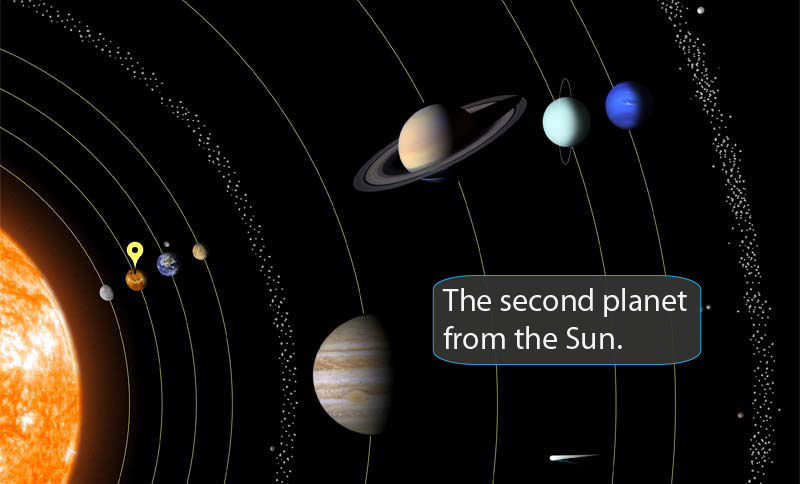
Answer: Venus
Fun fact: One Venus day is 243 Earth days, and the Sun rises in the west!
Clue #1:
Over 60 moons keep it company.

Clue #2:
It has a giant storm called the “Great Red Spot.”

Clue #3:
It is the largest planet in our solar system.
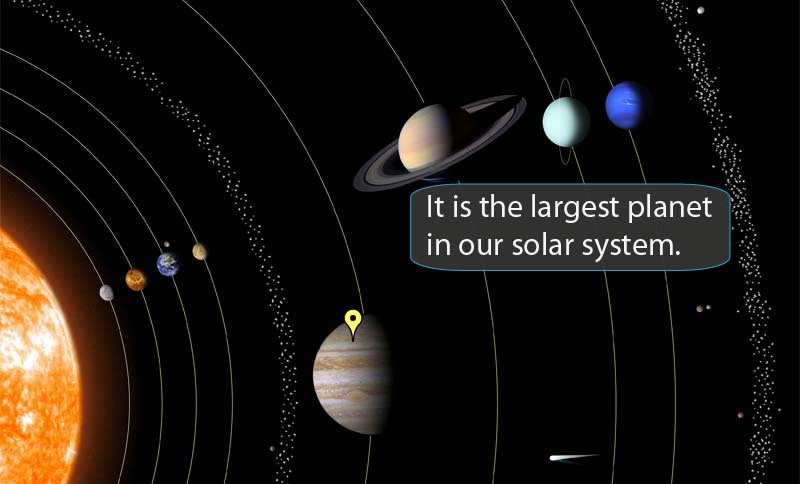
Answer: Jupiter
Fun fact: Jupiter contains almost three-fourths of all the planetary matter in our solar system.
Clue #1:
This kind of object is made of ice and rock.

Clue #2:
Sometimes very close to the Sun, sometimes very far away.

Clue #3:
Closing in on the Sun, it grows “hair” and a tail.

Answer: Comets
Fun fact: Comets are icy leftovers from the formation of our solar system.
Clue #1:
A small, rocky space object.

Clue #2:
Some have crashed into Earth.

Clue #3:
Most orbit in a region, or belt, between Mars and Jupiter.
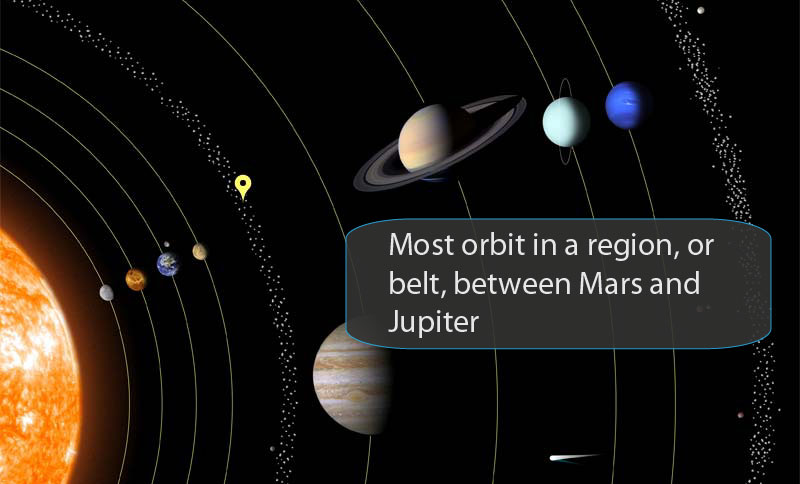
Answer: Asteroid
Fun fact: It may have been an asteroid hitting Earth causing sudden climate change that killed off the dinosaurs.
Clue #1:
This planet’s day can range from 800 °F to -290 °F.
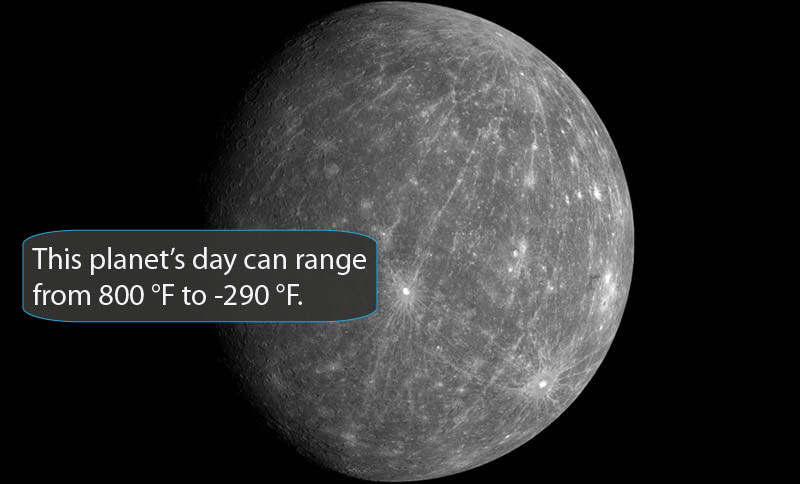
Clue #2:
This planet’s year is only 88 days.

Clue #3:
The planet closest to the Sun.

Answer: Mercury
Fun fact: From the surface of Mercury, the Sun appears more than three times as large as from Earth.
Clue #1:
Almost half of it has never been seen from Earth.

Clue #2:
The only place besides Earth that people have visited.

Clue #3:
It is always going through a phase.

Answer: Moon
Fun fact: The Moon was probably formed when a Mars-sized object crashed into the young Earth.
Clue #1:
You may see its bright trail in the night sky.

Clue #2:
Earth takes several showers of them each year.

Clue #3:
It is also called a shooting star.

Answer: Meteor
Fun fact: The bright streak is not actually the rock, but rather the glowing hot air as the rock zips through the atmosphere.
Clue #1:
This planet would float in a big-enough bathtub.
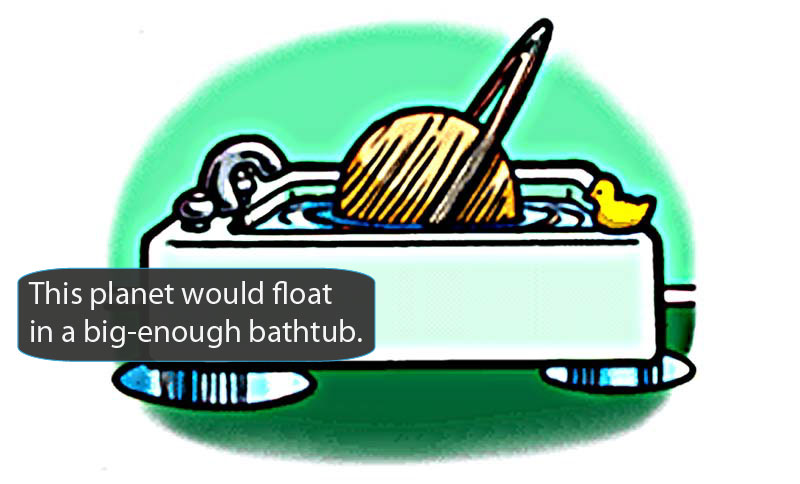
Clue #2:
It has thousands of ringlets.

Clue #3:
It is number six from the Sun.
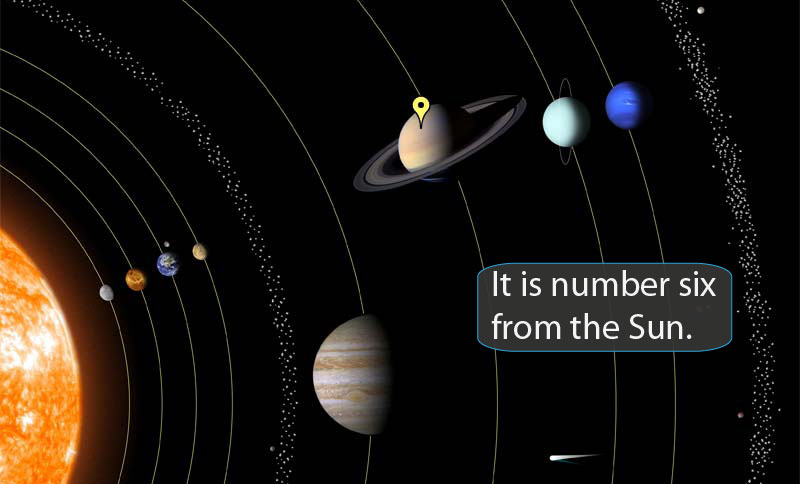
Answer: Saturn
Fun fact: At its core, Saturn (and Jupiter) is much hotter than the surface of the Sun!
Clue #1:
Long ago, there were floods, but not anymore.

Clue #2:
If you weigh 100 pounds on Earth, you will weigh 38 pounds here.

Clue #3:
It is fourth in line from the Sun.
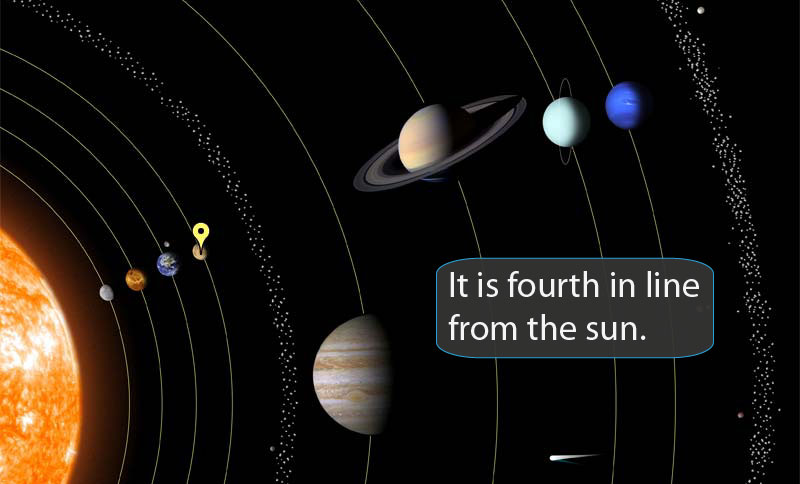
Answer: Mars
Fun fact: Mars has the highest mountain and the largest canyon of all the planets.
Clue #1:
The most violent place in the solar system.

Clue #2:
The biggest nuclear bomb.

Clue #3:
Earth’s closest star.

Answer: Sun
Fun fact: The Sun contains 99.86% of the solar system’s mass.
Clue #1:
The ocean planet.

Clue #2:
Its atmosphere is mostly nitrogen.

Clue #3:
The third rock from the Sun.

Answer: Earth
Fun fact: Earth is the densest planet (and including the Sun) in the solar system.
Clue #1:
Big blue-green ice giant.

Clue #2:
Rotates on its side.

Clue #3:
The next to the farthest planet from the Sun.

Answer: Uranus
Fun fact: The methane in Uranus’ atmosphere is what makes it blue-green because it absorbs red light.
Clue #1:
A beautiful methane blue.

Clue #2:
Brrr! It’s -391 °F.
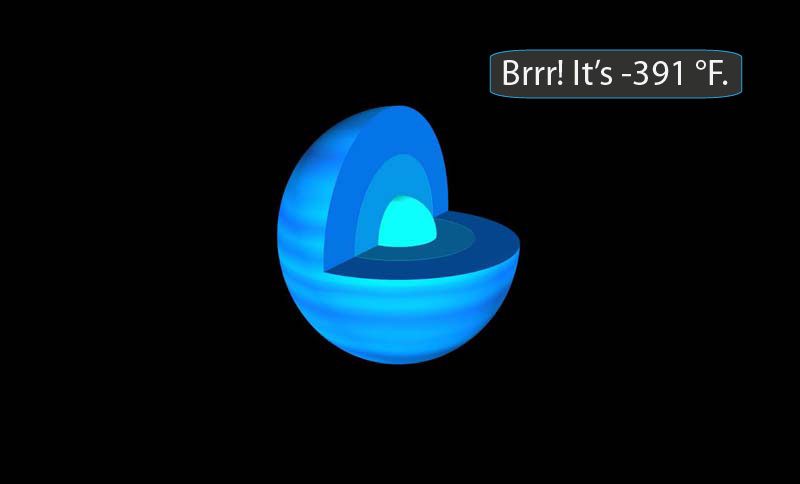
Clue #3:
The farthest planet from the Sun.

Answer: Neptune
Fun fact: Neptune has the fastest winds in the solar system, measured up to 1,500 miles per hour.
Clue #1:
So small it was demoted to dwarf.

Clue #2:
Has a moon almost half its size.

Clue #3:
If you weigh 100 pounds on Earth, you will weigh only 7 pounds here.

Answer: Pluto
Fun fact: Pluto’s orbit is very lop-sided, with its most distant point from the Sun almost one-third of the way farther than its closest point.
Clue #1:
It’s the largest asteroid, but so large it is also a dwarf planet.
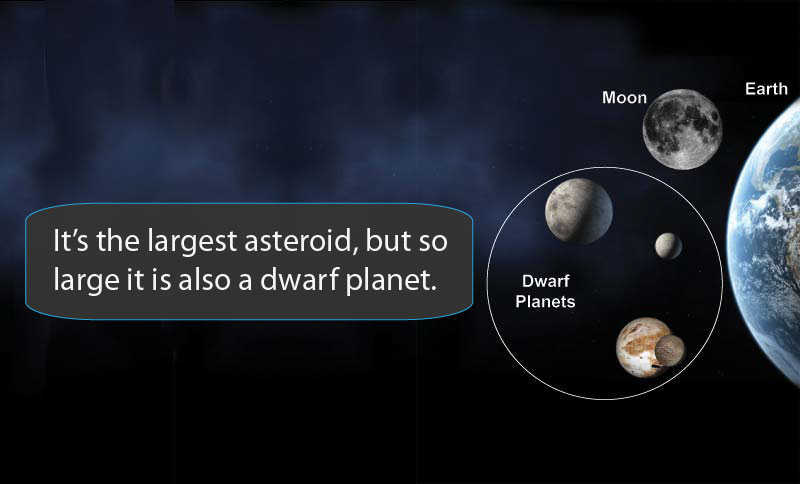
Clue #2:
NASA’s Dawn mission will visit it.

Clue #3:
Contains at least one-quarter of all the mass in the Asteroid Belt.

Answer: Ceres
Fun fact: Ceres is about the same distance across as Texas.
Clue #1:
A region beyond Neptune, where many comets come from.
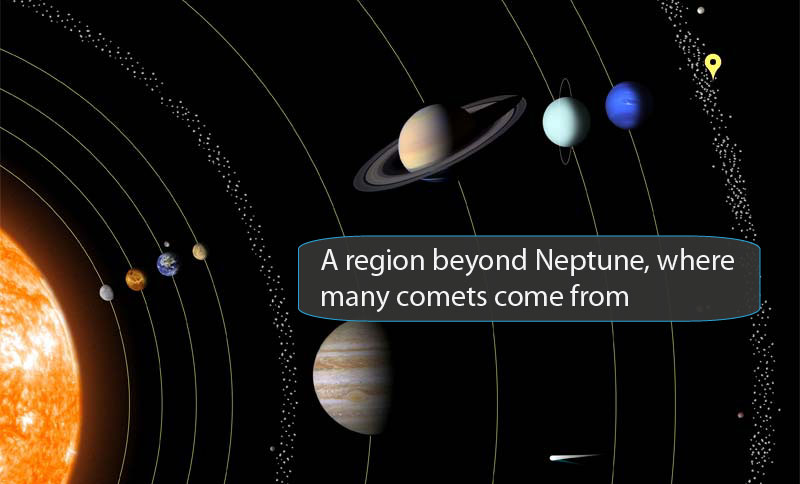
Clue #2:
Pluto and Eris live there.

Clue #3:
NASA’s New Horizons spacecraft will arrive at this region around 2016.

Answer: Kuiper Belt
Fun fact: The Kuiper Belt may have a trillion or more comets and one-hundred thousand icy bodies larger than 100 kilometers (60 miles) across.
Clue #1:
A far-far distant ball-shaped shell of possibly a trillion icy bodies.

Clue #2:
Where long-period comets come from.

Clue #3:
It is about 1,000 times farther from the Sun than Pluto is.

Answer: Oort Cloud
Fun fact: The Oort Cloud is so far from the Sun that it could take one of its icy objects 30 million years to make one orbit.
Clue #1:
It is the second largest object in the Asteroid Belt.

Clue #2:
NASA’s Dawn mission orbited this asteroid for more than one year.

Clue #3:
This asteroid has a mountain twice as high as Mt. Everest.

Answer: Vesta
Fun fact: Many more meteorites on Earth have been proven to come from Vesta than from any other solar system body.